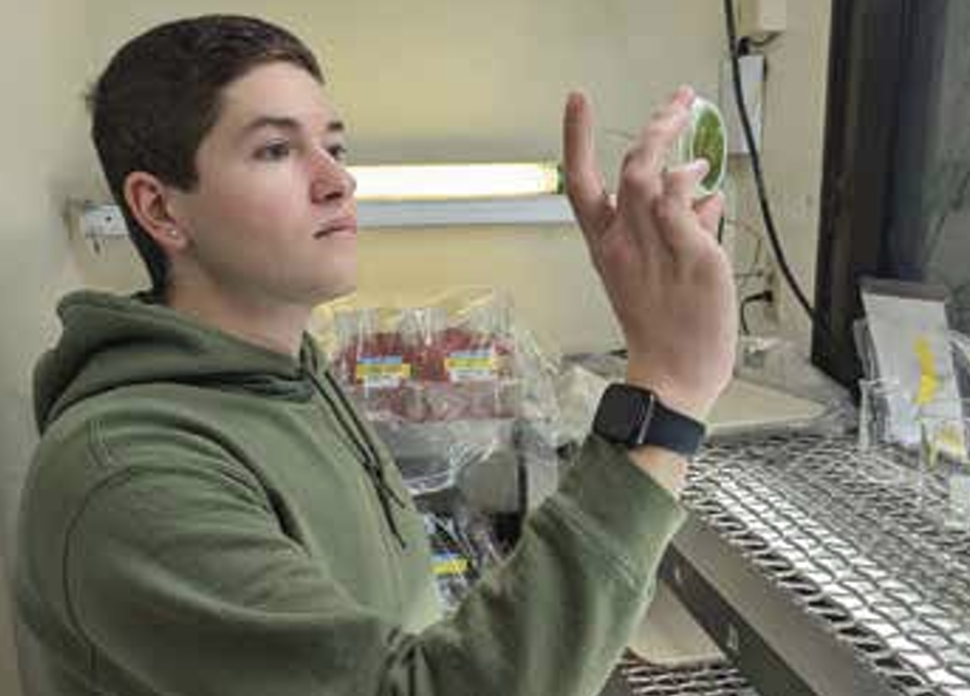Learning to De-Stress: Improving Oak Survival by Inhibiting a Stress Hormone
Every spring for the past three years, Max Winkeljohn, CREW graduate researcher, ventured out onto zoo grounds, to Spring Grove Cemetery & Arboretum, and as far as The Morton Arboretum in Chicago, to collect fresh growth from mature oak trees. As part of his dissertation work, Max was interested in using these cuttings to start oak tissue culture lines, which could be used to test whether a compound called silver thiosulfate (STS) could make culture initiation, which has a low success rate with many oak species, more successful.
STS inhibits the action of the plant hormone ethylene, which is produced in response to stress and can inhibit tissue growth. Once shoots were brought back to the lab, they were sterilized in a bleach solution and the tips were placed into tubes of culture medium, some of which included STS.
Survival and growth of the shoots were measured over the course of several months and results were mixed. For example, the Pin Oak (Quercus palustris) had a nearly 100% survival rate without the STS, so there wasn’t much room for improvement, but for others, such as the 400-year-old White Oak (Q. alba), the oldest tree at Spring Grove, the survival rate increased by 40%!
Based on Max’s work, CREW now is testing the effects of STS on culture initiation of several threatened oak species as part of its IMLS-funded project. The results from the first year’s collections confirm that STS does increase survival in some species and helps establish oak shoots in culture. Those cultures are important as they will provide tissues for cryobanking in the Frozen Garden of CREW’s CryoBioBank.


